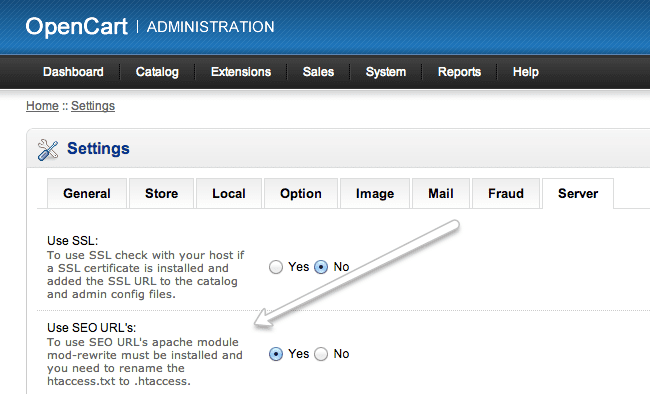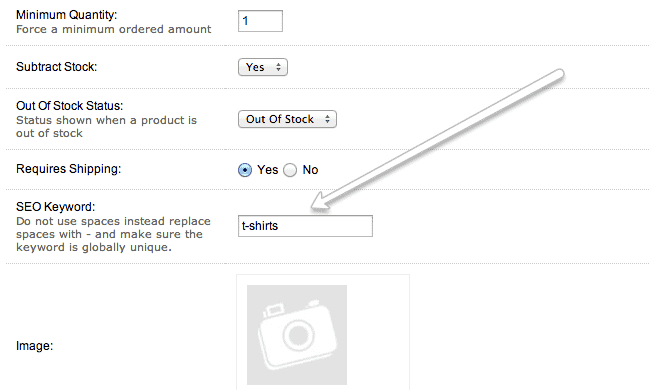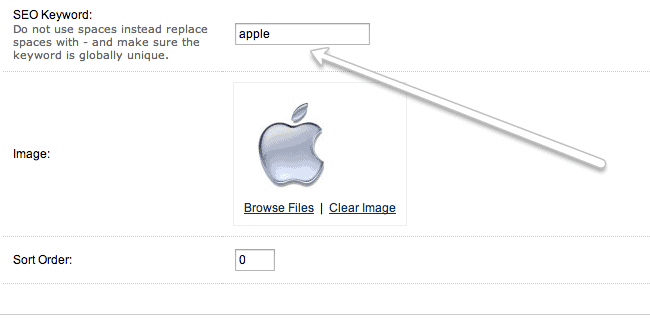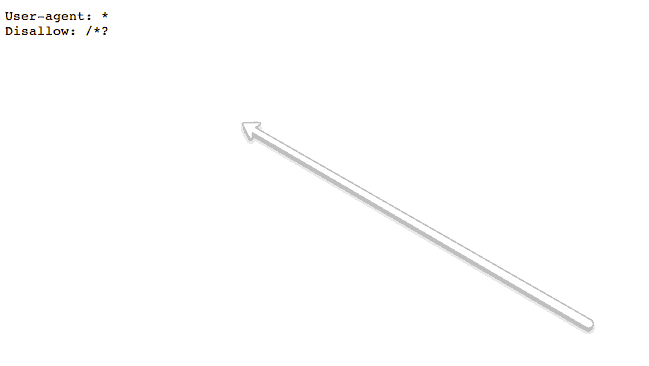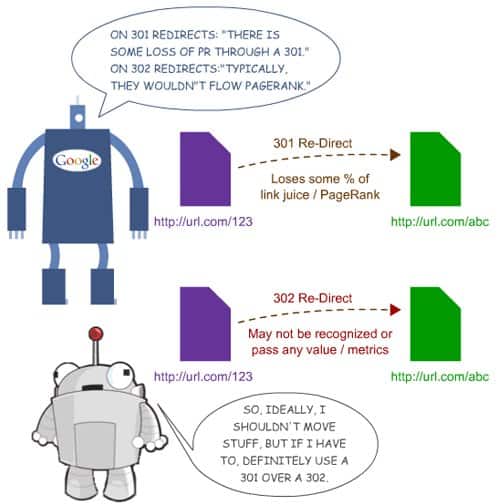OpenCart SEO is in demand nowadays because this ecommerce CMS is taking the world by storm. This OpenCart SEO guide touches on how to set up your store in the best way possible. Since it’s an ecommerce platform, owners of OpenCart stores take SEO issues into serious consideration. That’s because a good SEO fit store can bring tons of prospects. And that’s during a very long period of time. So, once you have everything properly set-up, you can just add more products and categories to your store. The built-in OpenCart SEO features will take care of the rest. Let’s take a closer look at the OpenCart SEO tutorial on how to make that happen.
Built-in OpenCart SEO Optimization Features
User Friendly URLs
Those are basically URLs that make sense. For instance, http://www.mysite.com/t-shirts/ instead of http://www.mysite.com?p=34. You can set up the feature in the Home -> Settings -> Server section in your OpenCart admin panel. Check the image below.
In order to make that feature work, you need to ensure that your .htaccess file is placed in the root of your server and properly configured. Here’s a sample section for you:
# 1.To use URL Alias you need to be running apache with mod_rewrite enabled.
# 2. In your opencart directory rename htaccess.txt to .htaccess.
# For any support issues please visit: http://www.opencart.com
Options +FollowSymlinks
# Prevent Directoy listing
Options -Indexes
# Prevent Direct Access to files
Order deny,allow
Deny from all
# SEO URL Settings
RewriteEngine On
# If your opencart installation does not run on the main web folder make sure you folder it does run in ie. / becomes /shop/
RewriteBase /
RewriteRule ^sitemap.xml$ index.php?route=feed/google_sitemap
RewriteRule ^googlebase.xml$ index.php?route=feed/google_base
RewriteCond %{REQUEST_FILENAME} !-f
RewriteCond %{REQUEST_FILENAME} !-d
RewriteCond %{REQUEST_URI} !.*\.(ico|gif|jpg|jpeg|png|js|css)
RewriteRule ^([^?]*) index.php?_route_=$1
### Additional Settings that may need to be enabled for some servers
### Uncomment the commands by removing the # sign in front of it.
### If you get an "Internal Server Error 500" after enabling any of the following settings, restore the # as this means your host doesn't allow that.
# 1. If your cart only allows you to add one item at a time, it is possible register_globals is on. This may work to disable it:
# php_flag register_globals off
# 2. If your cart has magic quotes enabled, This may work to disable it:
# php_flag magic_quotes_gpc Off
# 3. Set max upload file size. Most hosts will limit this and not allow it to be overridden but you can try
# php_value upload_max_filesize 999M
# 4. set max post size. uncomment this line if you have a lot of product options or are getting errors where forms are not saving all fields
# php_value post_max_size 999M
# 5. set max time script can take. uncomment this line if you have a lot of product options or are getting errors where forms are not saving all fields
# php_value max_execution_time 200
# 6. set max time for input to be recieved. Uncomment this line if you have a lot of product options or are getting errors where forms are not saving all fields
# php_value max_input_time 200
# 7. disable open_basedir limitations
# php_admin_value open_basedir none
You can just copy the text above and use your text editor (Notepad on Windows or TextWrangler on Mac) to save it as .htaccess . Having done that, just place it to the root directory on your FTP server.
Now you can specify your keywords on product pages.Those keywords will be used in your URLs. Just go to Catalog -> Products and click the Insert button to add a new product. Fill out all the text fields that are required for adding a new product and go to the Data tab. Now scroll to the SEO Keyword text field. That done, just type in your keyword. For instance, if you specify your SEO keyword as ‘t-shirts’ (without quotes), that product’s URL will look like this http://www.mysite.com/t-shirts
SEO Keywords for Manufacturers
With OpenCart, you have the ability to specify your manufacturer SEO keyword. Just like in the case with products, your manufacturer SEO keyword is used for creating an SEO URL for your manufacturer’s page. In order to add your manufacturer SEO keyword, just go to Catalog -> Manufacturers and click Edit across the manufacturer you’d like to edit or just click Insert if you’d like to add a new manufacturer. That done, just specify your keyword in the SEO Keyword text box.
While adding SEO keywords both for your products and manufacturers, make sure that you use unique keywords. Otherwise your OpenCart will create pages with the same URLs. For one, it’ll cause duplicate page title issues. That’s a bad idea because Google can take it that you just duplicate content across all your pages and add no valuable content. Doing so may result in dropped SEO rankings.
OpenCart SEO Tips
As a matter of fact, the tips hold true for any eCommerce CMS or just CMS. So, you can apply these general SEO tips for pretty much any and every content management system out there. You definitely need to make sure that you follow these tips. Otherwise if you decide to check your site for crawling issues down the road, you’ll have a few weeks of something to fix.
Duplicate Page Content and Titles
Since you can access the same page through different urls in OpenCart (for instance, http://yoursite.com/index.php?route=product/manufacturer and http://yoursite.com/manufacturer), Google and other search engines consider such pages and titles duplicate ones. One of the possible solutions would be to block crawling dynamic URLs (those that contain a ? question mark). You can prevent such URLs from being indexed with the help of robots.txt file. Just put Disallow: /*? on a separate line. Your robots.txt site may look like this.
No 302 Temporary Redirects
Be advised not to use temporary redirects (redirect 302) because Google won’t pass all the possible Google juice via such redirects. You want to use a temporary redirect only if you actually need to redirect your users to specific page for a specific and short time span. That can happen if you just need to fix the original page or you run a promo and you need to lure more folks to your landing page. In most cases, you should use a 301 redirect (a permanent one) because it clearly tells Google that all the SEO metrics should be used for the target page now.
Just Right Metadata
You also want to make sure that the length of your meta titles and descriptions is just right. It won’t benefit your site if you use lengthy meta titles and/or descriptions. The truth is, your overly long meta data will be unmercifully truncated (cut off). That’s because Google snippets have character limitations. You can use 70 characters for your meta title and 156 for meta description. So, before you actually fill out appropriate text fiels in your OpenCart, you really need to test if your meta data is just right in terms of length. There’s a cool tool entitled Google SERP Snippet Optimization Tool. It just allows you to see how your Google snippet is gonna look. Plus it shows when you reach your meta data character limits.
Also, you want to make sure that your meta title content is not too short. The minimum value would be 8 characters. So, if you create a category page for Apple products, don’t use apple as your SEO keyword because your category title will be just a-p-p-l-e. That’s just 5 characters, which is not sufficient.
You definitely should use metadata in your OpenCart store. In any site for that matter. That’s because meta titles and descriptions are usually used by the major search engines to create snippets on search results pages. If you don’t specify your own metadata, a search engine will try to create one on its own. It’ll use the content of the page it creates a snippet for. And you never know how or if it’ll be compelling to your potential site visitors.
Meta Tag Keywords
Though this feature is available, you won’t gain much OpenCart SEO benefits by using meta keywords. That’s because search engines stopped using meta keywords as a main factor in ranking sites. At the same time it won’t hurt you either. So, feel free to fill out appropriate meta tag keywords text boxes, but don’t expect much from them.
Too Many On-Page Links
You may get such an error message if you run an SEO campaign (for example with Moz.com). Thing is, you can pretty much ignore them because Google is not any more that severe as for ample amount of links on web pages. Well, as long as you don’t go into extremes and don’t start placing thousands of links. Watch this video where Matt Cutts explains the whole shebang in more detail.
OpenCart SEO Extensions
Though you can properly set up your OpenCart even with the default built-in SEO features, you may also want to check out some OpenCart SEO Extensions (also known as OpenCart SEO modules) out there:
- OpenCart SEO Pack
- Better Product SEO URL’s
- Better Category SEO URL’s
- UBER SEO URL’s for OpenCart 1.5.X
- Multilingual SEO URL’s PLUS 1.5.X
- SEO Brands (from Opencart SEO Pack PRO)
- Advanced SEO Editor (from Opencart SEO Pack PRO)
In Conclusion
There’s just enough default SEO features in OpenCart so that your site ranks properly in Google and the other major search engines. Sure thing, you can also extend your site’s SEO functionality and make it more feature-rich if you install extra SEO extensions. All in all, you’re good to go with OpenCart given that you follow the best on-page SEO practices.


